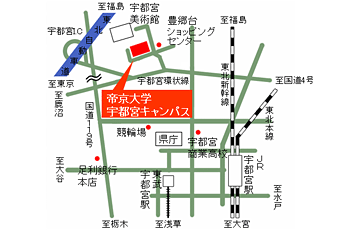
自動車技術センター


本センターは、従来の自動車技術に加えてカーボンニュートラルを実現する環境技術と、CASE(Connected,Autonomous/Automated,Shared,Electric)やMaaS(Mobility as a Service)など将来自動車に対する社会的ニーズに対応した幅広い技術課題に対して、4つのグループを組織して社会貢献と情報発信、および人材育成を目的に活動しています。

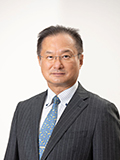
本センターは2020年4月に、旧オートモビル・テクノロジー・センターを改組して発足しました。現在は理工学部に所属する6人の教員が基盤・環境エネルギー、安全・快適、AI・自動運転およびアドバンスド エアモビリティの4つのグループに分かれて活動しています。この4つのグループは、ATセンターの整備士資格を持つスタッフと認証工場資格を有する優れた設備と計測機器を活用し、従来の自動車工学分野に加えて、カーボンニュートラルを実現する環境技術と、CASEやMaaSと呼ばれる新たな分野など、社会的ニーズに対応した先進創造研究と人材育成をめざします。具体的には下記の通りです。

センター長
加藤 彰 教授
黒沢 良夫 教授
蓮田 裕一 教授
米田 洋 教授
牧田 匡史 准教授
福田 直紀 助教
(2025年8月現在)
本センターでは、基盤・環境エネルギー、安全・快適、AI・自動運転およびアドバンスド エアモビリティの4つのグループに分かれて、センター保有の設備も活用した研究を行っています。
燃費・電費の向上と電動機の基礎的研究など、先進自動車に求められる環境技術に関する研究を行う
自動車の実路における排出ガス低減と燃費・電費の向上技術に関する研究を行っています。BEVに関しては外部診断機を用いて各種走行パラメータを計測、解析することによりBEVのエコドライブ手法を提案し成果を上げています。また、小型電動カートを用いて、電動機や電動機制御など駆動系の最適化で、電動機を省エネルギーかつ滑らかに運転するための研究を行っています。
振動騒音に関する研究と交通事故リスク要因の調査・分析を行い、運転支援や事故防止医術の研究に取り組む
安心で安全な車社会を実現するために、工学的な視点からさまざまな交通事故リスク要因の調査・分析を行い、衝突時の乗員傷害軽減や車体構造の最適化、運転支援や事故防止技術の研究に取り組んでいます。また、快適性に関連した研究として、CAEと実験計測を用いて、自動車の高周波車内騒音予測技術の開発、防音材の吸音・遮音解析や新しい防音構造の研究開発に取り組んでいます。
自動運転に必要な認知、判断、制御システムをAI分野から支援
自動運転に必要な歩行者や対向車などを認知、判断、制御するシステムをAIや画像処理技術の分野から支援しています。これらの画像処理技術を応用して作物のみに的確に農薬を散布するロボットの開発も行っています。
既存の航空機イメージを打破して、新たな飛行モビリティを考える
「空の産業革命」と言われるドローンは、電動での飛行の世界を拡げたとともに、大型化、有人化によって、パーソナルモビリティの概念を壊して発展しようとしています。プロペラと翼があることや、一つのローターを回すなどのエアモビリティの既存概念を破る新たな形態の模索時代が到来しました。そこに一石を投じられるように、自由な発想で有人/無人のエアモビリティ形態を研究しています。
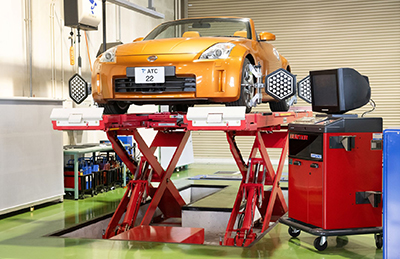
自動車の車輪や車軸を決められた角度に配置、整列させる4輪アライメントを行う装置です。
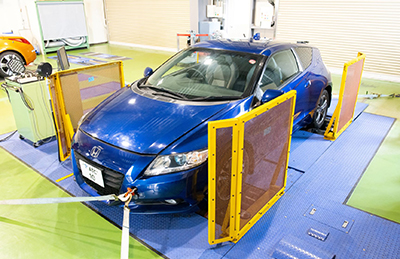
自動車の燃費や馬力の測定を行う装置です。
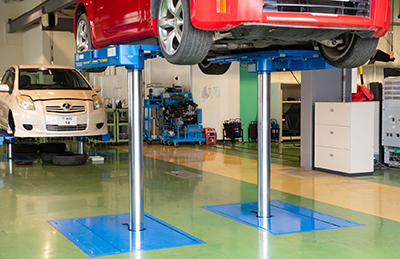
車両のリフトアップが必要な作業を行うことが可能です。
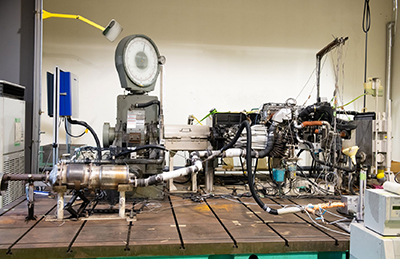
エンジン単体の評価を行う装置です。
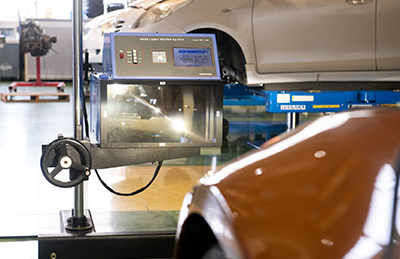
ヘットライトの光軸調整を行い、これを評価ことが可能な装置です。
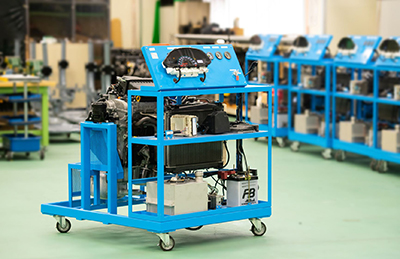
主にエンジンの構造学習に使用します。
本センターの活動や所属の教員の教育・研究成果を発表する場として、年一回、年報を刊行しています。
以下のリンクから、既刊の年報を閲覧できます。
